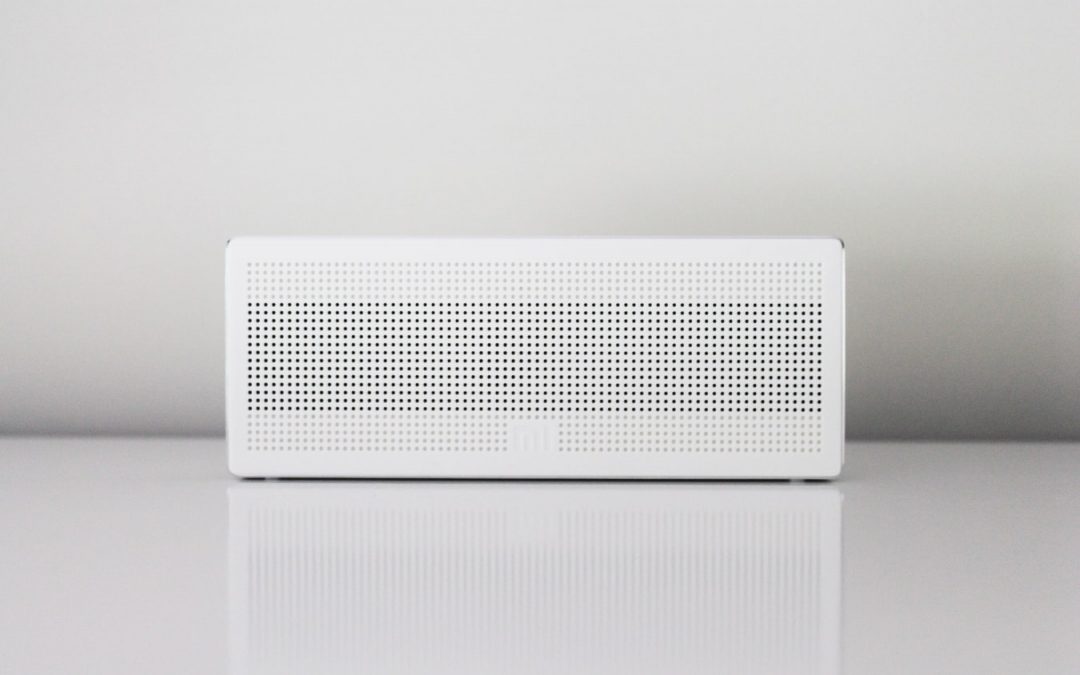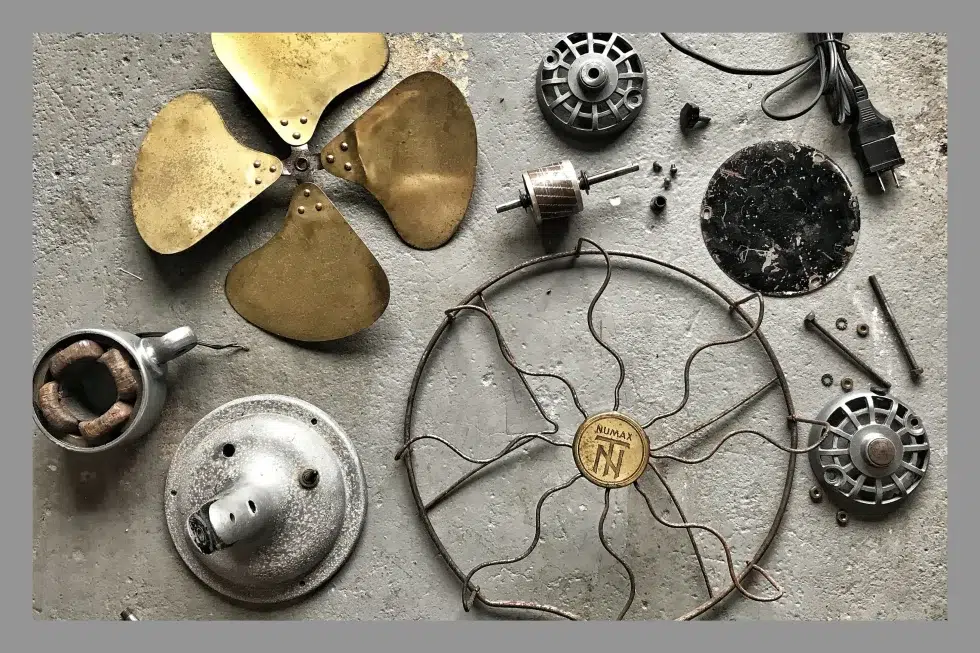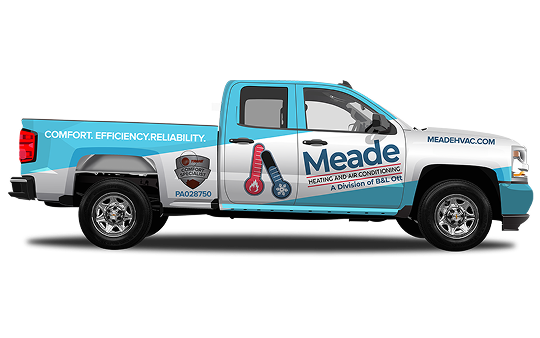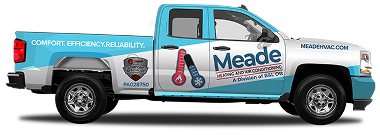
In the world of home climate control, innovation has been a constant companion. From traditional central heating and cooling systems to smart thermostats, the options for keeping our living spaces comfortable have expanded significantly over the years. One innovation that has been gaining immense popularity in recent times is ductless heating and cooling systems.
Ductless systems, also known as mini-split systems, represent a revolutionary approach to indoor climate management. They offer homeowners a flexible and energy-efficient solution to regulate the temperature of their living spaces. Ductless systems are becoming the preferred choice for Meade HVAC customers seeking year-round comfort and efficiency in their homes.
Understanding Ductless Systems
Ductless heating and cooling systems, often referred to as mini-splits, differ significantly from traditional HVAC systems in their design and operation. The most prominent difference is the absence of ductwork. Traditional HVAC systems rely on a network of ducts to distribute conditioned air throughout your Chester Springs home. This can lead to energy losses and decreased efficiency. Ductless systems, on the other hand, eliminate the need for ducts entirely, making them a more efficient and versatile option.
A ductless system typically consists of two main components: indoor units and outdoor units, connected by refrigerant lines. The indoor units are sleek and compact, mounted on walls or ceilings in individual rooms or zones. These units are responsible for delivering warm or cool air directly into the space they serve, allowing for precise temperature control in each room.
The outdoor unit, placed outside the home, contains the compressor and condenser components that enable the system to heat or cool the air. Refrigerant lines run between the indoor and outdoor units, carrying the refrigerant necessary for heat exchange. This component setup not only ensures efficient operation but also offers homeowners the flexibility to customize their indoor climate on a room-by-room basis. This is a distinct advantage over traditional systems with central air distribution.
Benefits of Ductless Heating & Cooling
Ductless heating and cooling systems come with a multitude of benefits that make them an increasingly popular choice for Chester County homeowners.
Energy Efficiency – Ductless HVAC systems offer exceptional energy efficiency, as there are no ducts to leak or lose conditioned air. This results in lower utility bills and reduced environmental impact.
Zoned Heating and Cooling – Ductless systems also provide zoned heating and cooling. This allows for personalized temperature control in different areas of your Chester Springs home. It promotes comfort and reduces energy wastage.
Compact Design – Their compact design and easy installation make them a practical choice for both new construction and retrofitting older homes.
Quiet – Ductless systems are often quieter than traditional HVAC units. You can create a more peaceful living environment.
Technology – They can be equipped with advanced features like programmable thermostats and remote controls. This enhances convenience and overall home comfort. Talk to a Meade HVAC professional to learn more about additional technologies that can increase comfort and convenience.
All these advantages combine to make ductless heating and cooling systems a smart and efficient solution for Chester County homeowners seeking year-round comfort and cost savings.
How Do Ductless Systems Work?
Ductless HVAC systems work on a simple yet highly efficient principle. At their core, they operate on the same fundamental principles as traditional HVAC systems but with a significant twist in the distribution of conditioned air.
In a ductless system, the process begins with the outdoor unit, which contains the compressor and condenser components. This unit is responsible for either absorbing heat from the outside air to warm your home or releasing heat to cool it. This depends on the selected mode. The refrigerant in the system plays a crucial role in this process, as it cycles between the indoor and outdoor units.
The indoor units, typically mounted on walls or ceilings in individual rooms or zones, are equipped with fans and coils. These indoor units are responsible for taking the conditioned air created by the outdoor unit and distributing it directly into the space they serve. The refrigerant lines connect the indoor and outdoor units, allowing for the transfer of heat.
One key advantage of ductless systems is their ability to provide zoned heating and cooling. Each indoor unit can be controlled independently. This enables precise temperature adjustments for each room or zone. This zoned approach not only enhances comfort but also contributes to energy efficiency, as you only condition the spaces that are in use.
In essence, ductless HVAC systems offer a more flexible and efficient way to maintain indoor comfort by eliminating the need for traditional ductwork. They provide Chester Springs homeowners with greater control over their indoor climate.
Installation Process
The installation process of a ductless HVAC system is known for its relative simplicity and minimal disruption to your home. It typically involves mounting the indoor units on walls or ceilings in the desired rooms, connecting them to the outdoor unit through refrigerant lines, and setting up the necessary electrical connections.
Since ductwork is not required, there’s no need for extensive renovations or modifications to your home’s structure. This streamlined installation process reduces both time and labor costs. Additionally, ductless systems can be installed by a Meade HVAC technician in a single day in many cases, allowing homeowners to enjoy the benefits of efficient and zoned heating and cooling without prolonged disruptions to their daily routines. Overall, the straightforward installation is one of the many reasons why ductless HVAC systems are becoming a preferred choice for homeowners looking to upgrade their climate control systems.
Unit Placement
The placement of ductless HVAC units is a critical factor in optimizing their performance and your overall comfort. When deciding where to install these units, it’s important to consider factors such as the unit’s size, the room’s layout, and your specific heating and cooling needs.
Wall-mounted units are typically placed high on the wall for even airflow distribution, while ceiling cassette units are installed in the ceiling’s center to achieve 360-degree coverage. Floor-standing units are placed at ground level, often along exterior walls for efficient heating or cooling. Concealed duct units are hidden within ceilings or walls, with only a small grille visible.
Proper placement ensures that conditioned air is effectively delivered throughout the room or zone, maximizing the system’s efficiency and your comfort. Consulting with a professional Meade HVAC installer can help you determine the best placement for your ductless HVAC units based on your unique requirements and the layout of your Chester Springs living space.
Zoning and Individual Room Control
One of the standout advantages of ductless HVAC systems is their exceptional zoning capability and individual room control. With traditional HVAC systems, you often have a single thermostat controlling the temperature for the entire house, leading to hot and cold spots and wasted energy. Ductless systems, on the other hand, allow you to create distinct climate zones within your home, each with its own dedicated indoor unit and thermostat. This means you can tailor the temperature to suit individual preferences and only condition the rooms that are in use, ultimately saving energy and money.
Whether it’s keeping the bedroom cool for a good night’s sleep or ensuring the living room is warm and cozy during a family gathering, the flexibility and precision of ductless HVAC zoning provide unparalleled comfort and efficiency.
Maintenance of Ductless Systems
Maintaining a ductless HVAC system is relatively straightforward, making it an attractive choice for homeowners in the Chester Springs area. Regular maintenance primarily involves cleaning or replacing the filters in the indoor units to ensure optimal airflow and efficiency. Cleaning the coils and checking for any debris or dust buildup is also recommended.
It’s advisable to schedule an annual professional inspection with Meade HVAC to assess the overall system performance, refrigerant levels, and any potential issues. Unlike traditional HVAC systems with extensive ductwork, ductless systems have fewer components to worry about, making maintenance easier and more cost-effective. With proper care, ductless systems can offer consistent comfort and energy efficiency for years to come.
Energy Efficiency and Savings
Ductless HVAC systems are renowned for their energy-efficient operation, offering significant savings on utility bills. Their efficiency stems from the absence of ductwork, which can account for up to 30% of energy loss in traditional systems due to leaks and poor insulation. Ductless systems deliver conditioned air directly to the rooms they serve, eliminating these losses.
Moreover, the ability to create individual climate zones allows for precise temperature control, so you only heat or cool the spaces in use. Additionally, many ductless systems are equipped with advanced features like programmable thermostats and inverter technology, which adjust the system’s output based on the specific heating or cooling needs, further enhancing efficiency. Overall, the energy-efficient design of ductless HVAC systems not only reduces your environmental footprint but also puts money back in your pocket through lower energy bills.
Noise Levels
Ductless HVAC systems are renowned for their quiet operation, making them an excellent choice for homeowners seeking a peaceful indoor environment. Unlike traditional HVAC systems with noisy central blowers and ducts, ductless systems are designed to operate quietly.
The indoor units are equipped with advanced sound-dampening technology, and the outdoor units are located outside, reducing noise levels inside your Chester County home. This ensures that you can enjoy the comfort of your ductless system without the distraction of constant background noise, allowing for a more tranquil and comfortable living space.
Environmental Impact
Ductless HVAC systems have a positive environmental impact due to their energy efficiency and reduced carbon footprint. By eliminating the energy losses associated with ductwork and offering precise zoning and individual room control, ductless systems significantly reduce energy consumption, resulting in lower greenhouse gas emissions.
Additionally, many ductless systems use eco-friendly refrigerants with lower global warming potential, further minimizing their environmental impact. Overall, the energy-efficient and customizable nature of ductless HVAC systems aligns with sustainability goals and contributes to a greener and more eco-conscious approach to indoor climate control.
Comparison with Traditional HVAC Systems
In the realm of home heating and cooling, the choice between ductless HVAC systems and traditional systems can be pivotal in determining your comfort, energy efficiency, and overall satisfaction. Traditional HVAC systems, relying on ductwork to distribute conditioned air throughout the home, have long been the go-to choice. However, the emergence of ductless systems, or mini-splits, has offered a compelling alternative.
Ductless systems offer several distinct advantages: energy efficiency due to the absence of ducts, zoned heating and cooling for individual room control, and easy installation. Traditional systems, on the other hand, are known for their broad coverage but can suffer from energy losses through duct leaks and lack the precision of zoning. The choice between the two ultimately depends on your specific needs and priorities, but it’s clear that ductless HVAC systems are gaining ground for their flexibility, efficiency, and adaptability to modern living.
Want a Ductless HVAC System? Meade HVAC Can Help!
In conclusion, the choice between ductless HVAC systems and traditional systems ultimately boils down to your specific needs and priorities. While traditional systems have been the default option for decades, ductless systems are rapidly gaining popularity for a variety of reasons. The variety of indoor unit types further enhances their adaptability to different spaces and design preferences.
Ductless systems represent a modern, eco-friendly approach to home climate control, providing homeowners with greater comfort, control, and cost savings. Whether you’re looking to upgrade your existing system or planning a new construction project, considering the advantages of ductless HVAC systems is a smart step towards a more efficient and comfortable home. If you are interested in installing a new ductless HVAC system call on the professionals at Meade HVAC in Chester Springs for help. You can reach us at
610-458-8706 or you can use the
contact page on our website. The future of indoor climate control is here, and it’s ductless.
 In the world of home climate control, innovation has been a constant companion. From traditional central heating and cooling systems to smart thermostats, the options for keeping our living spaces comfortable have expanded significantly over the years. One innovation that has been gaining immense popularity in recent times is ductless heating and cooling systems.
Ductless systems, also known as mini-split systems, represent a revolutionary approach to indoor climate management. They offer homeowners a flexible and energy-efficient solution to regulate the temperature of their living spaces. Ductless systems are becoming the preferred choice for Meade HVAC customers seeking year-round comfort and efficiency in their homes.
In the world of home climate control, innovation has been a constant companion. From traditional central heating and cooling systems to smart thermostats, the options for keeping our living spaces comfortable have expanded significantly over the years. One innovation that has been gaining immense popularity in recent times is ductless heating and cooling systems.
Ductless systems, also known as mini-split systems, represent a revolutionary approach to indoor climate management. They offer homeowners a flexible and energy-efficient solution to regulate the temperature of their living spaces. Ductless systems are becoming the preferred choice for Meade HVAC customers seeking year-round comfort and efficiency in their homes.






